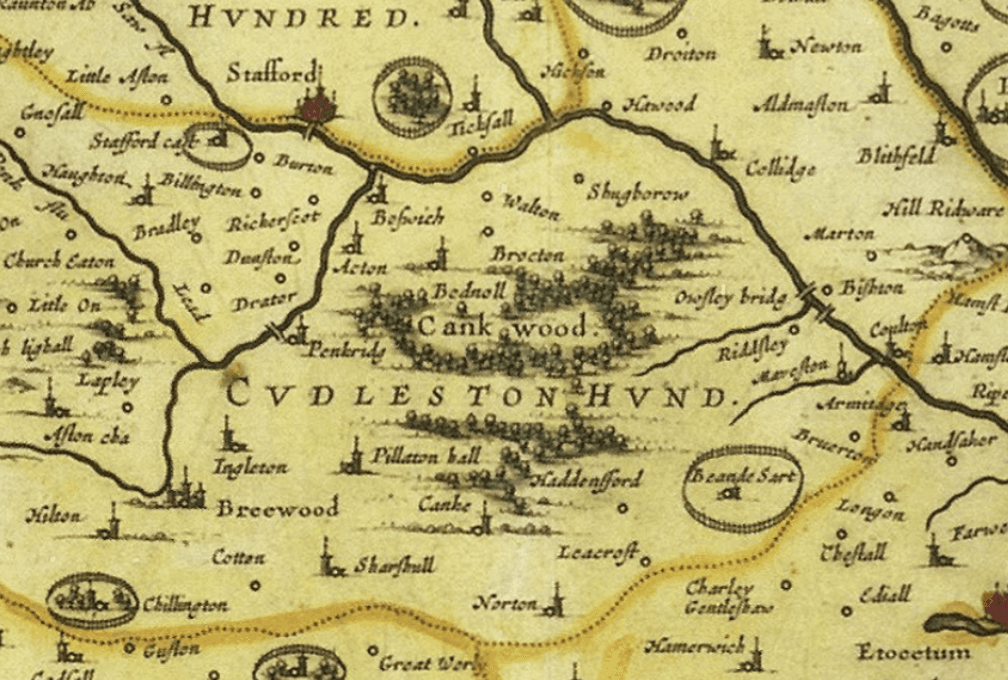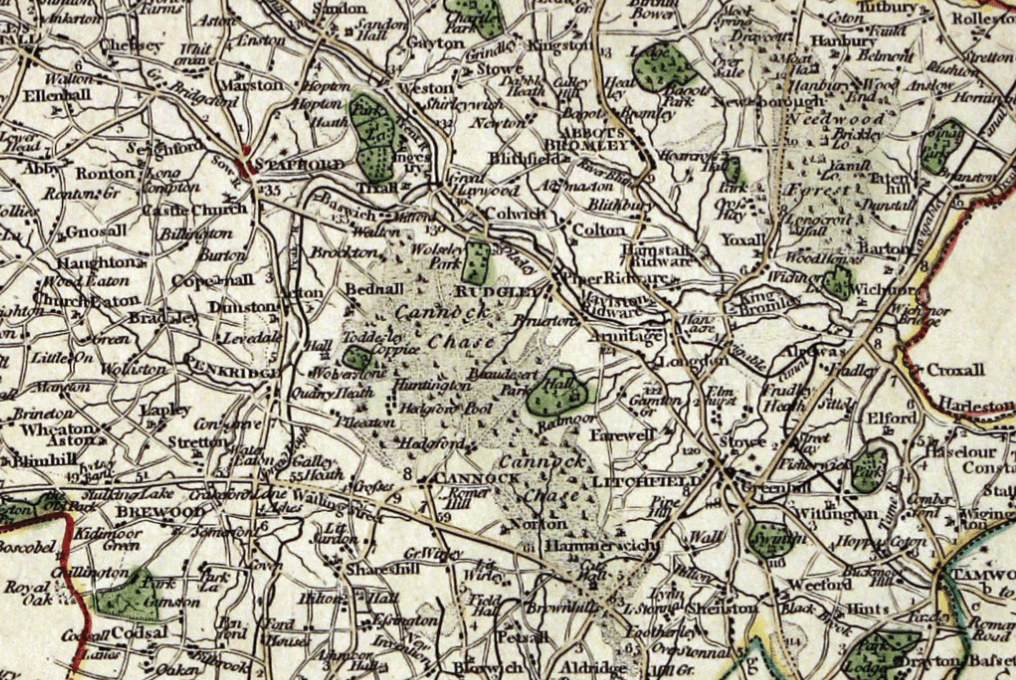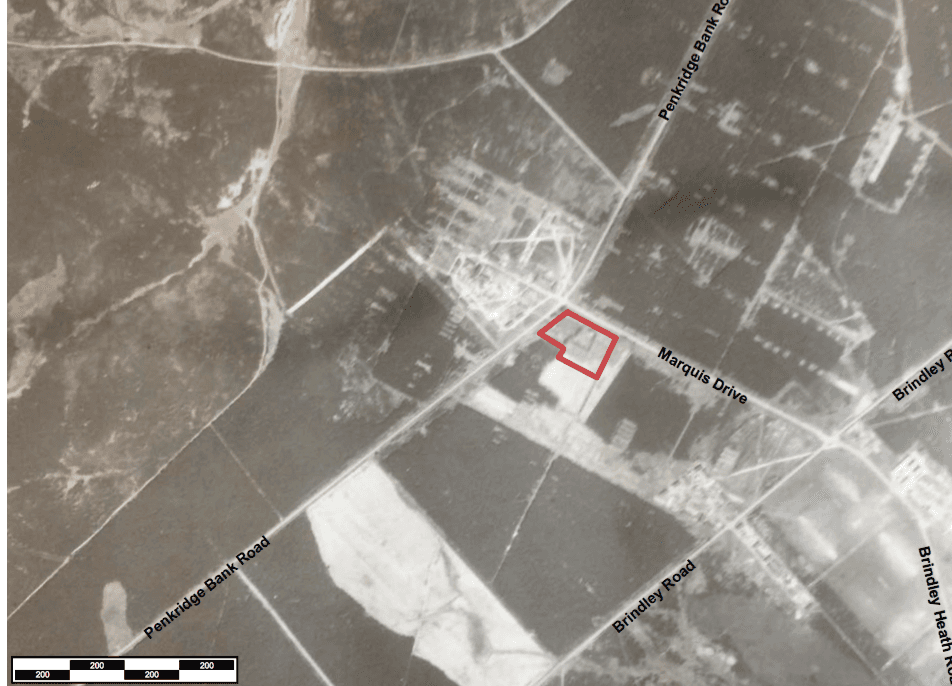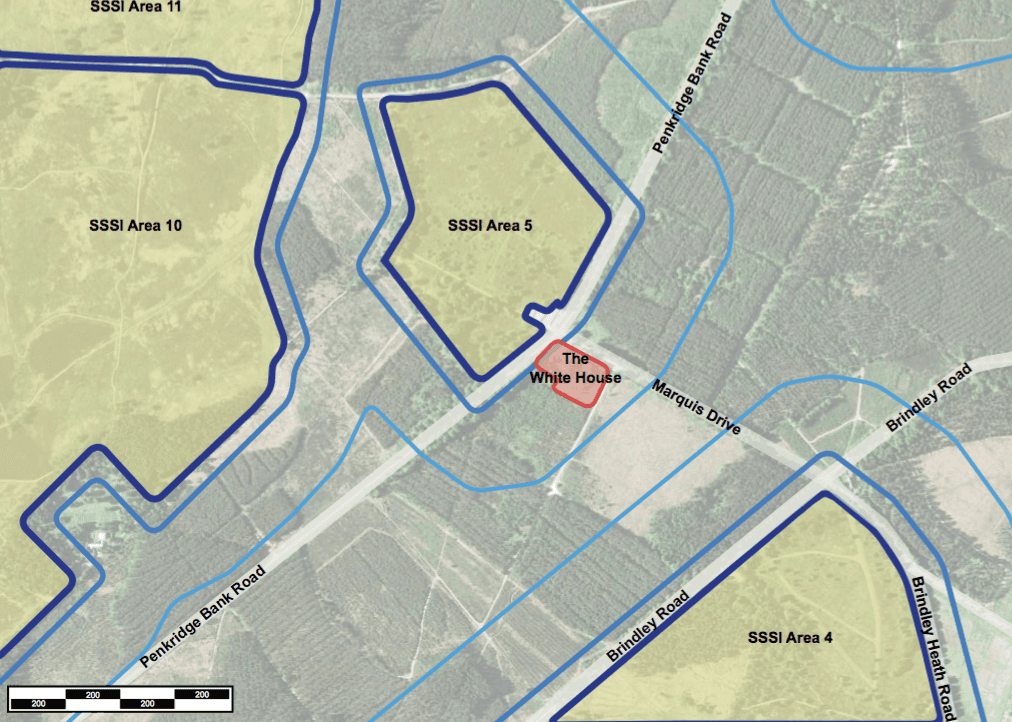...a call from The White House?
- by Charles Hutton
- •
- 22 Aug, 2016
- •
Needless to say, the short road-trip along the A34 to The White House on Cannock Chase was not quite where my imagination had previously taken me. It was obvious my client had an wicked sense of humour & wasn't afraid to use it!
Cannock Chase (North Mercia ) - 1646

A subsequent background search through the County Archives revealed how the surrounding landscape and environment has developed through the ages. Bronze Age & Roman remains are present in the area but significant development is recorded at Lichfield in the 7th century and Cannock & Rugeley developing as market towns in the 12th century.
By the mid-1600s the landscape had become more open, with more extensive heathland, due to timber extraction to produce charcoal for the local iron furnaces. The local ‘Grey- faced’ sheep started grazing the open heathland. Woodland, however, remained within the medieval deer parks and on higher ground.
Staffordshire - 1793

To facilitate these 'cities' a purpose built railway known as the ‘Tackeroo Railway’, constructed in 1915 and joined the main line near Cannock. The railway (marked yellow on the plan below) passed through the rear garden of the White House and supplied the Rugeley, Brocton & PoW camps. The Commanding Officer’s mess and quarters were located in the eastern corner of the site, with the parade ground and barracks to the south.
Stories have it, that the matron of the Military Hospital located half a mile away, used a field telescope to keep an eye on her nurses who visited the camp and played tennis on the court in garden of the White House. The nearby War Cemetery contains the graves of nearly 400 war dead, some of whom were treated at the nearby military hospital.


The site we're working on is outside any SSSI but within the SSSI Impact Risk Zones of SSSI areas 4, 5, 10 and 11 which shows the local authorities commitment to preserving the 'Dwarf Shrub Heath - Lowland' habitat, much of which is in a 'recovery' state.

So next time an American calls from the White House - be prepared!
For professional landscape services visit https://www.eagleeyedesign.co.uk/landscape-services
Today, I had one of those magical moments.
I felt the heat of February’s morning sun on my back while out walking the dogs this morning - the first time in four months.
Its such a relief as sometimes I think I’m locked into some overcast, damp, grey, British groundhog day - aptly celebrated in the US & Canada on February 2nd, see https://en.wikipedia.org/wiki/Groundhog_Day.
Anyway, I’m also feeling very proud of myself as I’ve been out in my garden trying to ‘keep ahead of the horticultural curve’. Plants & gardens stop for no man so I’ve upped my game. This is what I’ve been up to:
Powered by my mate’s dad’s electric scarifier I ripped out what appears to be 70% of my lawn, mostly moss, but also a surprising amount of twigs, stones, the odd clothes peg buried in the old winter thatch.
The said scarifier didn’t come with a collection box attached on it so the aforementioned twigs, stones & clothes pegs became missiles that ‘pinged’ against the neighbour’s fence. I kept myself out of the line of fire & kept the deluge of moss & missiles pointing away from the conservatory windows. After a satisfying 30 minutes I had amassed a large pile of moss & bits which filled half a wheelie bin. Remember folks, don’t put moss on your compost as those pesky moss spores will just love the warmth of your compost heap & re-emerge wherever the compost is spread.
My approach is to pass the spore-issue on to my local authority & use my trusty Stihl leaf-blower to make short work of cleaning up the strewn moss. I find any excuse to use the leaf-blower, it’s one of my go-to multi-tools. I use it for clearing snow from paths, mixing compost with soil, cleaning sawdust off wood-working tools, grass off mowers, excess water off windows when I’ve finished cleaning them, note-to-self Charlie: Clean windows.
You get the picture.
So my lawn now resembles Accrington Stanley’s 6 yard box on a winter’s Saturday; 80% mud, 15% grass & 5% sweat - no offence Accrington Stanley.
If that wasn’t enough, I only went & spiked the whole lawn with a fork, letting the air get in & opening up the soil’s compacted winter structure & lack of drainage. When doing this, I tend to go for an all out assault approach as I don’t have much patience for Gardener’s World niceties. I find a space on the lawn & using a folk I ‘spike & lift’ the turf in multiple places around me, then move & repeat. It does make the lawn look like a mole has gone out on a Friday night bender, but the lawn soon settles back into a healthy, life giving, grass growing, summer hoping, habitat.
For more ideas about making beautiful lawns so you can also enjoy the delights of Spring sunshine in, visit us the 'Garden Design' section of the website here...
https://www.eagleeyedesign.co.uk/garden-design
Contact us
Terms & Conditions
studio@eagleeyedesign.co.uk 01785 664204
